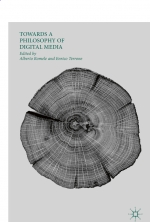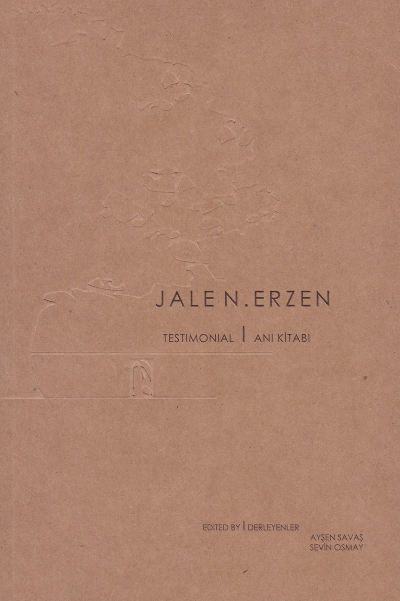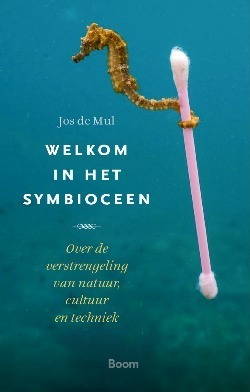Jos de Mul. A Cyberspace Odyssey. Oneindigheid voor beginners. In: Jos de Mul. Cyberspace Odyssee. Kampen: Klement, 6de druk: 2010 [2002], 248-270.
De lijn is uitgestrekt in één richting, het vlak in twee richtingen en vaste lichamen in drie richtingen; daarbuiten bestaat geen andere uitgestrektheid, want deze drie zijn alles.
Aristoteles
De vierde dimensie en de niet-euclidische geometrie behoren tot de belangrijkste unificerende thema’s van de moderne kunst en wetenschap.
Linda Henderson
1 Een odyssee door ruimte en tijd 2.0
Stanley Kubricks film 2001: A Space Odyssey wordt terecht beschouwd als een van de hoogtepunten uit de geschiedenis van de sciencefiction. De uit 1968 stammende film wordt niet alleen geroemd vanwege zijn grote artistieke kwaliteiten en zijn nog altijd verbazingwekkende (analoge) special effects, maar vooral ook vanwege de ideeënrijkdom die er uit spreekt.[1] Vooral Kubricks indringende visie op de evolutie van het leven en de rol van de techniek daarin heeft nog niets aan betekenis ingeboet.
Zoals alle grote kunstwerken kent deze film meerdere betekenislagen. Toen ik als middelbare scholier de film enkele jaren na de première voor het eerst zag, werd ik vooral gegrepen door het spannende verhaal over de reis van het ruimteschip Discovery naar Jupiter, op zoek naar buitenaards leven. Die reis wordt ondernomen nadat er op de maan een zwarte monoliet is ontdekt die radiosignalen richting Jupiter uitzendt. De bemanning bestaat naast de astronauten David Bowman en Frank Poole uit drie in hibernatie (kunstmatige winterslaap) verkerende experts en een kunstmatige intelligentie, de sprekende en zelflerende boordcomputer HAL.[2] HAL controleert alle functies van het ruimteschip en heeft de eindverantwoordelijkheid voor de gehele missie. Wanneer HAL Bowman en Poole de opdracht geeft het defecte onderdeel AE-35 van de centrale antenne van het ruimteschip te vervangen, ontdekken zij dat het onderdeel geen enkel mankement vertoont. Omdat zij in de veronderstelling verkeren dat HAL van slag is geraakt en misschien nog meer en mogelijk fatale fouten zal maken, besluiten ze zijn hogere functies uit te schakelen. Wanneer HAL daar achter komt, besluit hij de bemanning te elimineren. HAL slaagt erin vier van de vijf bemanningsleden te doden, maar Bowman ziet alsnog kans de boordcomputer uit te schakelen en de reis te vervolgen. Als de Dicovery Jupiter bereikt, vindt er een mysterieuze ontmoeting plaats tussen Bowman en de zwarte monoliet.
De door Kubrick verhaalde odyssee is, net als de Odyssee van Homeros waarnaar de titel van de film verwijst, meer dan het verslag van een avontuurlijke reis van enkele heldhaftige individuen door een onbekende wereld. De film toont enkele cruciale stappen in de odyssee die de mensheid voert door de onmetelijke tijd en ruimte. Het is, zoals ik in de Inleiding met verwijzing naar het programmaboekje bij de video-uitgave al opmerkte, “an epic tale of man’s ascent, from ape to space traveller and beyond” (Kubrick 1997). Hoewel het verhaal fictief is, sluit het nauw aan bij de natuurwetenschappelijke en technologische kennis van deze odyssee ten tijde van de productie van de film.
 Eric Nelson (ed.). Interpreting Dilthey.
Eric Nelson (ed.). Interpreting Dilthey. 




 This book uses the conceptual tools of philosophy to shed light on digital media and on the way in which they bear upon our existence. At the turn of the century, the rise of digital media significantly changed our world. The digitizing of traditional media has extraordinarily increased the circulation of texts, sound, and images. Digital media have also widened our horizons and altered our relationship with others and with ourselves.
This book uses the conceptual tools of philosophy to shed light on digital media and on the way in which they bear upon our existence. At the turn of the century, the rise of digital media significantly changed our world. The digitizing of traditional media has extraordinarily increased the circulation of texts, sound, and images. Digital media have also widened our horizons and altered our relationship with others and with ourselves.
 首先,我要感谢主办方,特别是陈望衡教授能邀请我在“环境美学和美丽的中国”会议上发言。这些都是非常重要和具有挑战性的学科,美丽的环境,特别是中国的环境,正面临着严重的威胁。在工业化的西方世界和像中国这样快速发展的国家现代化造成了非常严重的环境问题。因为在过去十年间中国工业化的惊人速度增长,中国的环境问题在世界上属于最糟糕的了。如果我们做个比较,例如世界上主要空气污染的工业区——东亚、欧洲以及北美,将变得非常清楚的是环境问题属于当今中国面临的最大问题,武汉亦是如此。据中华医学协会前任会长钟南山表示,空气污染甚至可能在不久的将来成为中国最大的健康威胁。
首先,我要感谢主办方,特别是陈望衡教授能邀请我在“环境美学和美丽的中国”会议上发言。这些都是非常重要和具有挑战性的学科,美丽的环境,特别是中国的环境,正面临着严重的威胁。在工业化的西方世界和像中国这样快速发展的国家现代化造成了非常严重的环境问题。因为在过去十年间中国工业化的惊人速度增长,中国的环境问题在世界上属于最糟糕的了。如果我们做个比较,例如世界上主要空气污染的工业区——东亚、欧洲以及北美,将变得非常清楚的是环境问题属于当今中国面临的最大问题,武汉亦是如此。据中华医学协会前任会长钟南山表示,空气污染甚至可能在不久的将来成为中国最大的健康威胁。

 Of all the times I met with Jale Erzen over the last couple of decades, our meeting in May 2002 was perhaps the most memorable. Jale had invited me to take part in the 6th International Symposium of SANART about Art and Social Engagement, held at the Middle East Technical University (METU) in Ankara. The Symposium took place shortly after 9/11, a time when many heated discussions were held in Turkey, just as in other countries, about the political Islam, the role of religion in society, and the separation of church and state, and in Ankara the tension was running high between the Kemalists and the politicians inspired by the Islam.
Of all the times I met with Jale Erzen over the last couple of decades, our meeting in May 2002 was perhaps the most memorable. Jale had invited me to take part in the 6th International Symposium of SANART about Art and Social Engagement, held at the Middle East Technical University (METU) in Ankara. The Symposium took place shortly after 9/11, a time when many heated discussions were held in Turkey, just as in other countries, about the political Islam, the role of religion in society, and the separation of church and state, and in Ankara the tension was running high between the Kemalists and the politicians inspired by the Islam. 
 In 2006, as part of a lecture tour through China, which brought me to cities as different as Urumqi and Shanghai, I also participated in a conference of the International Association of Aesthetics in Chengdu. It was on this occasion that I met Zha Changping for the first time. I was introduced to him by a common friend of us, the Shanghai-based historian Chen Xin. During my stay in Chengdu, Changping and I had several conversations, and I especially remember one hot evening in June, whenwe, together with museum sculptor Zhu Cheng and my wife Gerry, were sitting on a terrace near the Fu river, discussing the state of contemporary art, religion and politics in China and Europe, meanwhile enjoying the delicious Sichuan food and cool beers and watching the joyful play of the little children on the terrace. It was a wonderful evening, to which my memories often return.
In 2006, as part of a lecture tour through China, which brought me to cities as different as Urumqi and Shanghai, I also participated in a conference of the International Association of Aesthetics in Chengdu. It was on this occasion that I met Zha Changping for the first time. I was introduced to him by a common friend of us, the Shanghai-based historian Chen Xin. During my stay in Chengdu, Changping and I had several conversations, and I especially remember one hot evening in June, whenwe, together with museum sculptor Zhu Cheng and my wife Gerry, were sitting on a terrace near the Fu river, discussing the state of contemporary art, religion and politics in China and Europe, meanwhile enjoying the delicious Sichuan food and cool beers and watching the joyful play of the little children on the terrace. It was a wonderful evening, to which my memories often return. 2006年,我来中国参加学术讲座,访问了不同的城市。这些城市各具千秋,例如乌鲁木齐和上海。我也参加了国际美学协会在成都举办的会议。会上,我第一次见到查常平先生。介绍我们认识的是一位共同的朋友:上海的历史学者陈新。在成都逗留期间,常平和我有几次对话。我还记得六月一个炎热的夜晚,我们和雕塑家朱成以及我妻子格里(Gerry)一起坐在府河边的露台上,讨论中国和欧洲的当代艺术、宗教和政治的状况,一面享受着四川美食和冰啤,一面看着露台上小孩快乐地玩耍。真是一个美好之夜,让我难以忘怀。
2006年,我来中国参加学术讲座,访问了不同的城市。这些城市各具千秋,例如乌鲁木齐和上海。我也参加了国际美学协会在成都举办的会议。会上,我第一次见到查常平先生。介绍我们认识的是一位共同的朋友:上海的历史学者陈新。在成都逗留期间,常平和我有几次对话。我还记得六月一个炎热的夜晚,我们和雕塑家朱成以及我妻子格里(Gerry)一起坐在府河边的露台上,讨论中国和欧洲的当代艺术、宗教和政治的状况,一面享受着四川美食和冰啤,一面看着露台上小孩快乐地玩耍。真是一个美好之夜,让我难以忘怀。
 The development and global dissemination of computers - from the mainframe computers in the middle of the 20th century up to the smart phones that enable us to be online everywhere at any time - has an enormous impact on virtually every domain in human life, including art and literature. In the past decades, we have witnessed the emergence of different kinds of new media, that – among many other things – also have given birth to new art forms and genres, such as computer animations, hypertext, and interactive netart. All these new (that is: computer-mediated) media can be called “hypermedia”, because they share two fundamental characteristics: they are media that are both multimedial and non-linear.
The development and global dissemination of computers - from the mainframe computers in the middle of the 20th century up to the smart phones that enable us to be online everywhere at any time - has an enormous impact on virtually every domain in human life, including art and literature. In the past decades, we have witnessed the emergence of different kinds of new media, that – among many other things – also have given birth to new art forms and genres, such as computer animations, hypertext, and interactive netart. All these new (that is: computer-mediated) media can be called “hypermedia”, because they share two fundamental characteristics: they are media that are both multimedial and non-linear. Vanaf de derde druk verschijnt
Vanaf de derde druk verschijnt 





